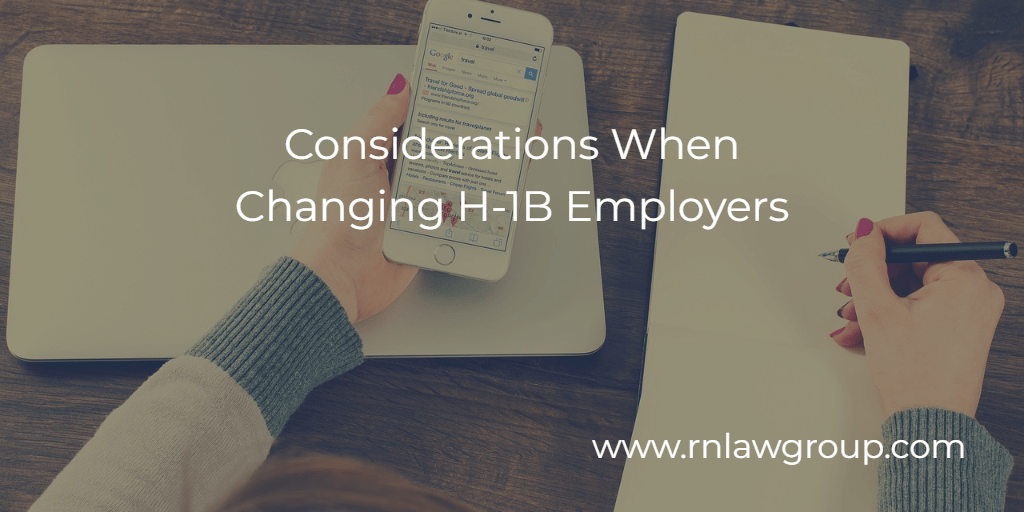
Considerations When Changing H-1B Employers
The American Competitiveness of the Twenty-First Century Act (AC21) allows for foreign workers to change jobs throughout their nonimmigrant status validity period. There are countless reasons for why a change of employer would be necessary, but the timing of the change must be taken into careful consideration.
When a nonimmigrant beneficiary changes companies from Company A to Company B, the petitioning employer, Company B, must first file a Form I-129 transfer petition to USCIS. The beneficiary will be authorized to work for Company B upon the filing being received by USCIS. However, the beneficiary can choose to start at any point in time after the filing date of the transfer petition and can even choose to stay with Company A after the transfer approval notice is issued for Company B.
Another consideration with changing employers, especially after a termination of employment from Company A, is that a change of employer to Company B must occur within 60 days of the date of cessation of employment. Filing a transfer petition to start with Company B within this 60-day grace period window allows the beneficiary and any dependents to remain in the United States. With a timely filing within the 60-day grace period, the beneficiary will continue to have work authorization and may begin working with Company B upon filing the petition to USCIS.
There are also some considerations to keep in mind once the change of employer has been approved. If the beneficiary wishes to change to another H-1B employer after starting with Company B, it is encouraged, though not required, that the beneficiary works with Company B for at least one full pay period to include that pay stub in Company C transfer petition to show maintenance of H-B status. One final consideration is where the employment project changes after the transfer petition to Company B has been approved. In this instance, if the change in employment requires performance of job duties at a work location outside of the Metropolitan Statistical Area (MSA), an amendment petition must be filed before the beneficiary can work from that new work location.
Although the discussed scenarios are not an exhaustive list of considerations to keep in mind when choosing to change H-1B employers, these considerations are the most common to consider. As always, it is important to consult with a business immigration attorney for fact-specific guidance on any other considerations to analyze prior to changing H-1B employers.
By: Jeanetly Garcia
Jeanetly Garcia advises employers and individuals through all phases of the non-immigrant visa process. As an attorney in the H-1B Department at Reddy Neumann Brown PC she is experienced in filing nonimmigrant petitions and applications for immigrant benefits, as well as, responding to USCIS issued requests for evidence concerning an array of legal issues.

